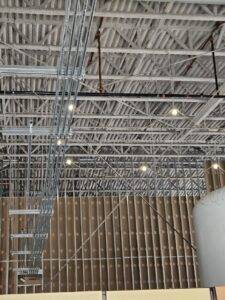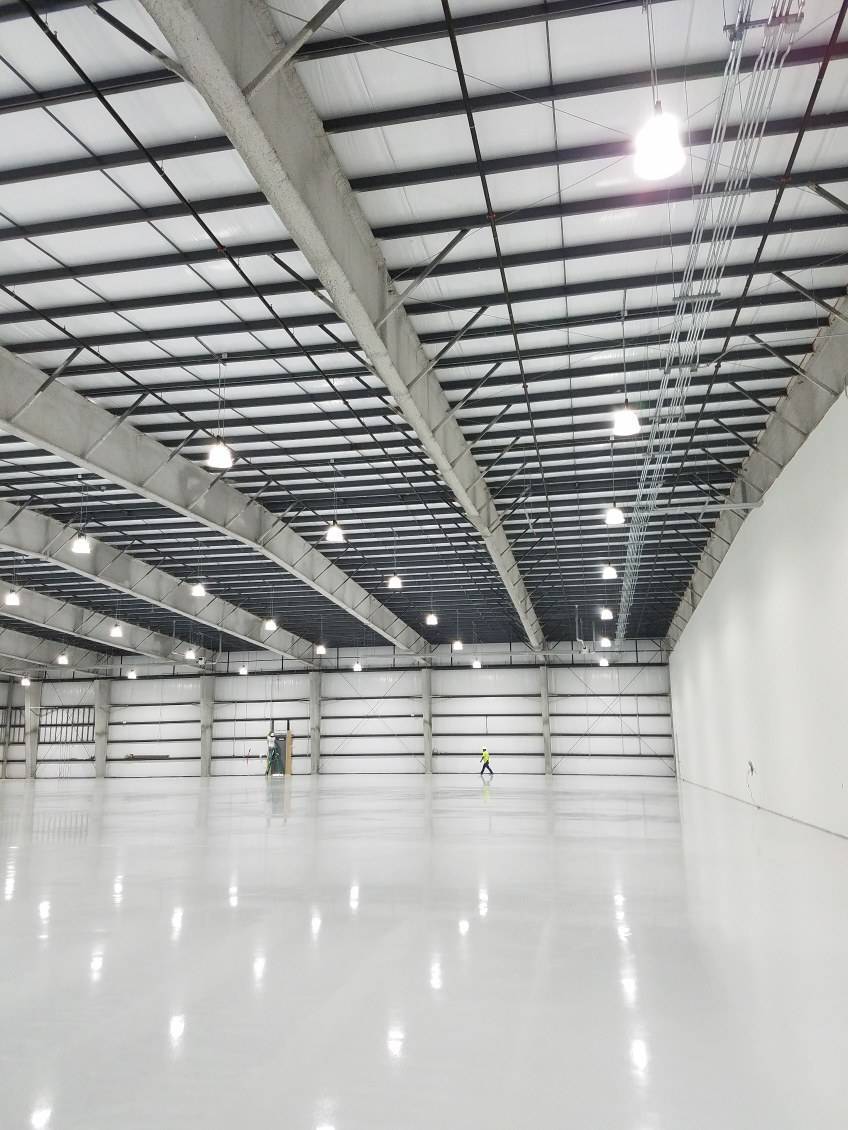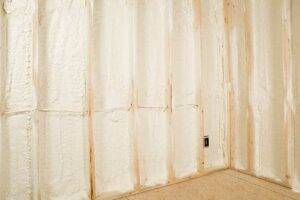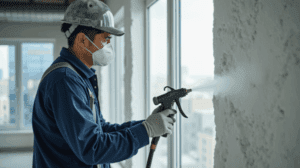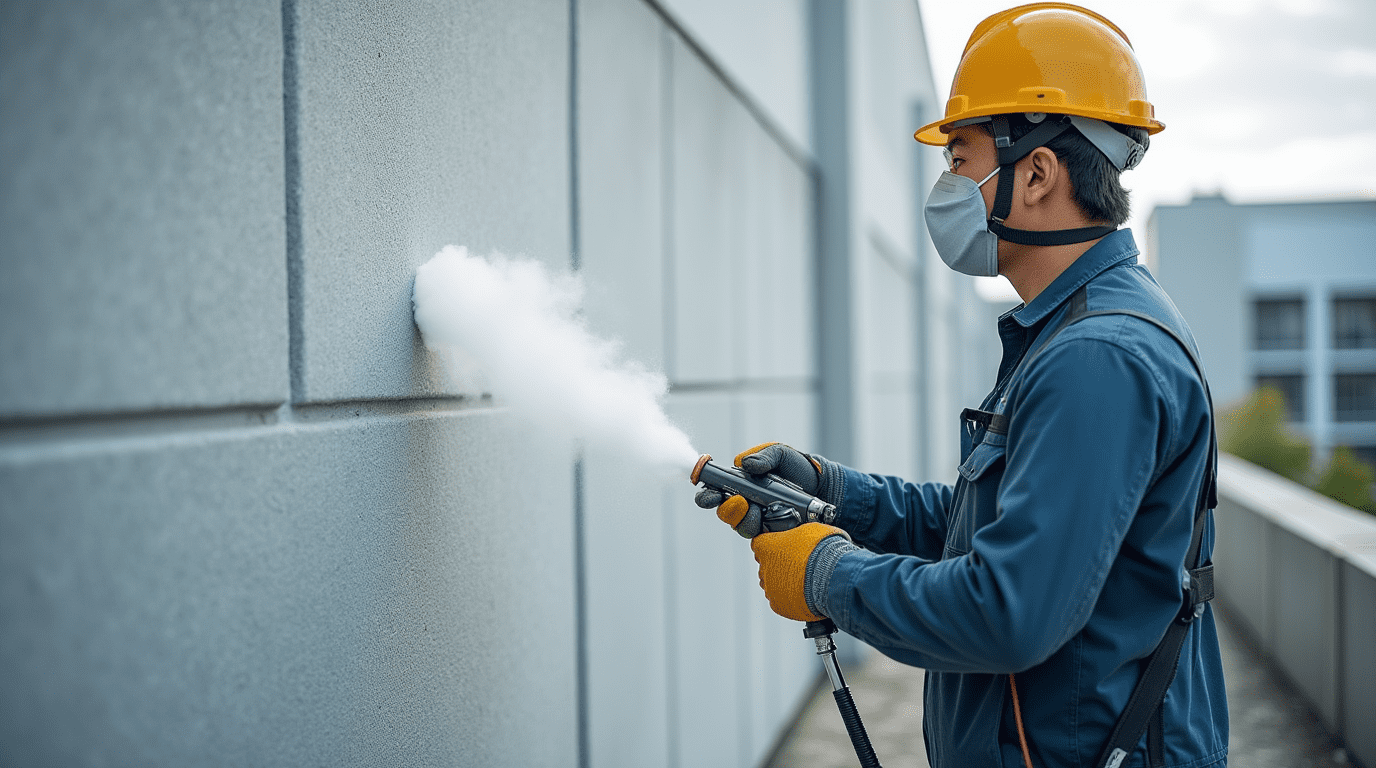K13 Insulation: Energy Performance Guide
Bahl Fireproofing
K13 sprayed fiber insulation delivers measurable energy savings for commercial and industrial facilities through proven thermal and acoustic performance. This guide covers the technical specifications, energy code compliance requirements, and real-world applications that make K13 a reliable choice for warehouse retrofits, metal building upgrades, and facilities where both thermal efficiency and sound control matter.
TLDR: K13 sprayed fiber insulation provides R-3.7 per inch thermal resistance and NRC ratings up to 1.05 when properly applied to solid substrates. With 80% recycled content and a 75-year service life, it qualifies for federal tax incentives under Section 179D and typically reduces heating and cooling costs by 20 to 30 percent in comprehensive building upgrades. Its primary function is thermal and acoustic performance, not structural fireproofing.
Opening
Walk into an uninsulated metal warehouse in July and you’ll understand why insulation matters. Surface temperatures on bare metal decking can exceed 140 degrees Fahrenheit, driving cooling costs through the roof and making the space uncomfortable for workers and equipment alike.
That’s where K13 comes in. Applied directly to metal roof decks, open joists, and wall surfaces, this sprayed cellulose fiber system creates a thermal barrier that reduces heat transfer and improves building performance. It’s not a replacement for structural fireproofing on steel beams, but it delivers measurable energy savings and acoustic control in facilities where both matter.
After two decades installing insulation systems throughout Texas, Kansas, and Oklahoma, I’ve seen firsthand how the right product in the right application pays for itself. Here’s what facility managers and contractors need to know about K13’s energy performance.
Thermal Performance and R-Value Reality
K13 delivers R-3.7 per inch of thermal resistance according to manufacturer technical data and ASTM C518 testing. That number matters because it represents the material’s ability to slow heat transfer, but context matters more.
A two-inch application on a metal roof deck provides approximately R-7.4 total, which significantly reduces conductive heat loss through the deck but doesn’t eliminate it entirely. Add air infiltration through gaps and seams, and the actual performance depends on proper surface preparation, complete coverage, and how well the existing building envelope controls air movement.
That’s why we focus on proper installation. K13 bonds to clean, dry substrates including steel, concrete, wood, and gypsum. Surface contaminants like oil, rust, or loose paint interfere with adhesion and create thermal bridges where heat can bypass the insulation. Every project starts with surface prep for a reason.
The material works best in facilities where the primary concern is thermal control across large exposed surfaces. Applications include warehouse roof decks, gymnasiums, manufacturing facilities with open ceilings, and metal buildings where traditional batt insulation isn’t practical.
Acoustic Performance That Actually Matters
Beyond thermal resistance, K13 provides measurable sound absorption. The Noise Reduction Coefficient ranges from 0.90 to 1.05 depending on thickness and substrate type, with the highest performance achieved at two-inch thickness over solid backing.
This matters in gymnasiums, manufacturing facilities, call centers, and any space where hard surfaces create excessive reverberation. The open-cell cellulose fiber structure traps sound waves and converts acoustic energy to heat through friction, reducing echo and improving speech intelligibility.
We’ve installed K13 in school gymnasiums where the noise level made it difficult for referees to communicate during games. After application, the reverberation time dropped measurably and the space became functional for both athletics and assemblies. That’s the kind of real-world performance that matters to building owners.
Fire Safety and Code Compliance
K13 achieves Class A fire ratings under ASTM E84 testing with a flame spread of 5 and smoke development of 5. Those numbers place it in the highest performance category for surface burning characteristics.
However, it’s critical to understand what that means. ASTM E84 measures how quickly flames spread across a material’s surface and how much smoke it generates, not how long a structural assembly resists fire. K13 provides surface fire resistance but does not replace structural spray-applied fireproofing on steel beams and columns that require fire-resistance ratings measured in hours.
Building inspectors know the difference. If your project requires structural fireproofing per the International Building Code, specify the correct product for that purpose. K13 goes over structural fireproofing where thermal and acoustic performance matter, not instead of it.
Energy Code Compliance and Tax Incentives
The International Energy Conservation Code sets minimum R-value requirements for commercial building roofs and walls based on climate zone. K13 helps facilities meet these requirements when applied at appropriate thickness, and the IRS Section 179D tax deduction rewards energy-efficient building improvements.
Section 179D allows building owners to deduct between fifty cents and five dollars per square foot for qualifying energy efficiency upgrades. The deduction amount depends on the percentage of energy cost reduction achieved compared to a reference building, with higher savings earning larger deductions.
Qualifying for these incentives requires third-party energy modeling and certification, but the potential savings make it worthwhile on larger projects. We work with mechanical engineers and energy consultants who handle the compliance documentation so building owners can capture available incentives.
Keep in mind that insulation alone doesn’t guarantee qualification. The building must achieve specific energy cost reductions, which typically requires a comprehensive approach including HVAC upgrades, lighting improvements, and air sealing alongside insulation.
Real-World Energy Savings
Energy savings from K13 depend on multiple factors including climate zone, building use, existing insulation levels, HVAC system efficiency, and how well the building envelope controls air infiltration. Industry data suggests heating and cooling cost reductions of 20 to 30 percent are typical when insulation is part of a comprehensive building upgrade.
Payback periods typically range from two to five years depending on utility rates, climate conditions, and the extent of other improvements made alongside insulation. A warehouse in Oklahoma with high cooling loads and expensive electricity sees faster payback than a facility in a milder climate with lower energy costs.
HVAC systems in insulated facilities work less to maintain temperature, which extends equipment life and reduces maintenance costs beyond the direct energy savings. That’s a secondary benefit that doesn’t show up immediately but matters over the 75-year service life that manufacturer testing indicates for K13.
We’ve seen warehouses where summer roof deck temperatures dropped from 140 degrees to 90 degrees after K13 application. That kind of temperature reduction translates directly to less heat gain in the space below and lower cooling loads for the air conditioning system.
Environmental Impact and Sustainability
K13 contains approximately 80 percent pre-consumer recycled content, primarily recycled newsprint and other paper products. The manufacturing process bonds these fibers with mineral binders to create a fire-resistant coating that achieves GREENGUARD Gold certification for low chemical emissions.
Life cycle assessments show that cellulose insulation stores more carbon than it generates during production and installation, creating a net carbon benefit over its service life. This matters for LEED projects and facilities pursuing sustainability certifications where material selection affects the overall environmental footprint.
The durability component shouldn’t be overlooked either. Insulation that lasts 75 years without replacement reduces the environmental impact associated with manufacturing, transporting, and installing new material. That longevity also means stable thermal performance over decades rather than degradation that reduces R-value over time.
Installation Considerations
K13 requires professional installation by ICC-licensed contractors. The material arrives on site as dry fiber and binder, gets mixed with water at the spray equipment, and applies wet to the substrate where it bonds and cures.
Environmental conditions affect application and curing. Temperatures between 60 and 80 degrees Fahrenheit work best, with continuous ventilation during the 24 to 48 hour curing period to remove moisture. Applying in freezing conditions or excessive humidity creates adhesion problems and extended curing times.
Building occupants need to evacuate during installation and the initial curing period due to cellulose dust generation. Proper respiratory protection is mandatory for installers, and the space requires thorough cleanup before occupancy resumes.
These aren’t limitations, they’re standard procedures for any commercial insulation installation. Work with contractors who understand the process and have the equipment and training to do it right. You can learn more about our K13 installation services on our service page.
Frequently Asked Questions
Does K13 replace structural fireproofing on steel?
No. K13 provides Class A surface fire resistance but not the structural fire-resistance ratings required for steel beams and columns under building codes. Use spray-applied fireproofing materials designed for structural protection, then apply K13 over that where thermal and acoustic performance matter.
How long does K13 last?
Manufacturer testing indicates a 75-year service life when properly installed and maintained. The material doesn’t degrade from normal temperature cycling or humidity exposure, and it resists settling and compression over time.
Can K13 be painted or coated?
Yes, but painting reduces acoustic performance by sealing the surface and preventing sound absorption. If appearance matters more than acoustics in a specific application, use compatible coatings that maintain fire ratings. Most facilities leave K13 in its natural finish.
What maintenance does K13 require?
Minimal. The material doesn’t require reapplication or routine maintenance under normal conditions. Damaged areas from roof leaks or mechanical contact can be repaired by cleaning the substrate and reapplying material to match the surrounding thickness.
Does K13 control moisture or prevent condensation?
K13 is vapor permeable and doesn’t include a vapor barrier. It slows moisture movement but doesn’t eliminate it. Facilities with high humidity or condensation concerns need proper vapor control strategies including mechanical ventilation and possibly vapor barriers independent of the insulation system.
Can I install K13 myself?
No. K13 requires ICC licensing for installation, and the specialized spray equipment, training, and safety procedures aren’t practical for owner-applied work. Professional installation ensures proper adhesion, thickness, and coverage while meeting occupational safety requirements.
Key Takeaways
- K13 delivers R-3.7 per inch thermal resistance and NRC ratings up to 1.05 with proper substrate and thickness
- Energy savings of 20 to 30 percent are typical when insulation is part of comprehensive building upgrades
- Section 179D tax deductions range from fifty cents to five dollars per square foot for qualifying projects
- Class A fire ratings apply to surface burning characteristics, not structural fire-resistance ratings
- Installation requires ICC licensing, proper surface preparation, and 24 to 48 hours for curing
- The 75-year service life and 80 percent recycled content support sustainability goals
Contact Us
If your facility needs insulation that delivers measurable thermal and acoustic performance, let’s talk about whether K13 makes sense for your application. Contact Bahl Fireproofing today to schedule a consultation or request a project-specific evaluation.
Disclaimer: This article provides general educational information about fireproofing and insulation systems and does not constitute professional engineering advice or product specification. System selection must be based on project-specific fire ratings, thermal requirements, acoustic performance needs, environmental conditions, substrate requirements, and budget constraints. Code requirements vary by jurisdiction and project type. Always consult with a licensed professional and verify UL or FM assembly listings before finalizing specifications.

